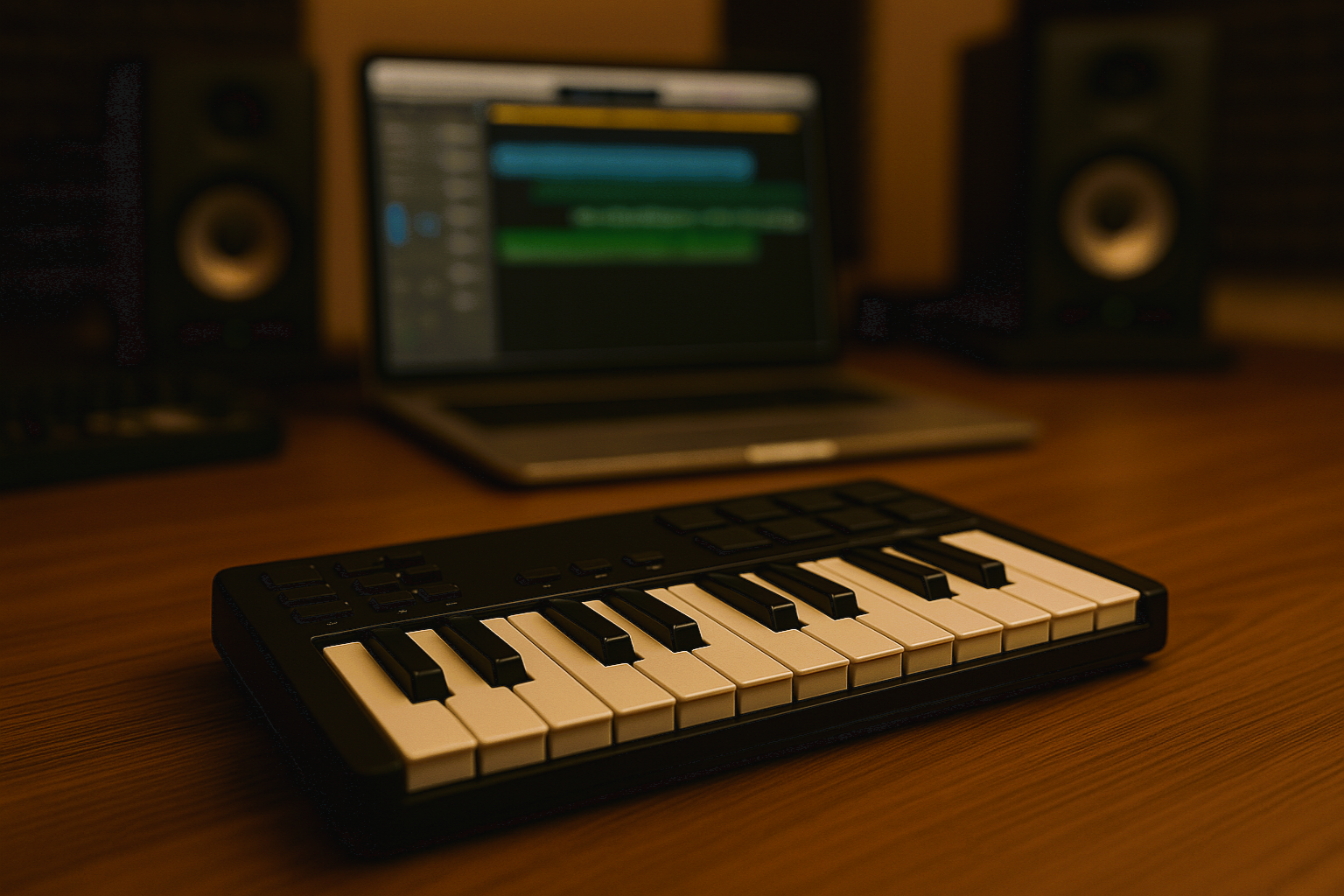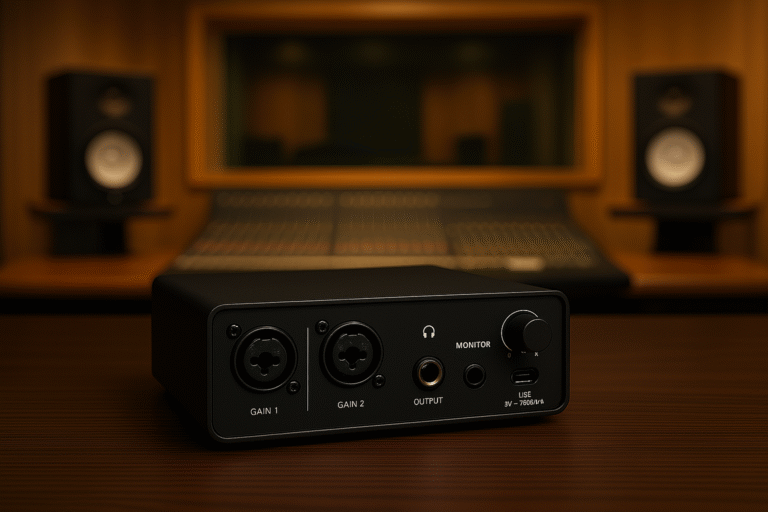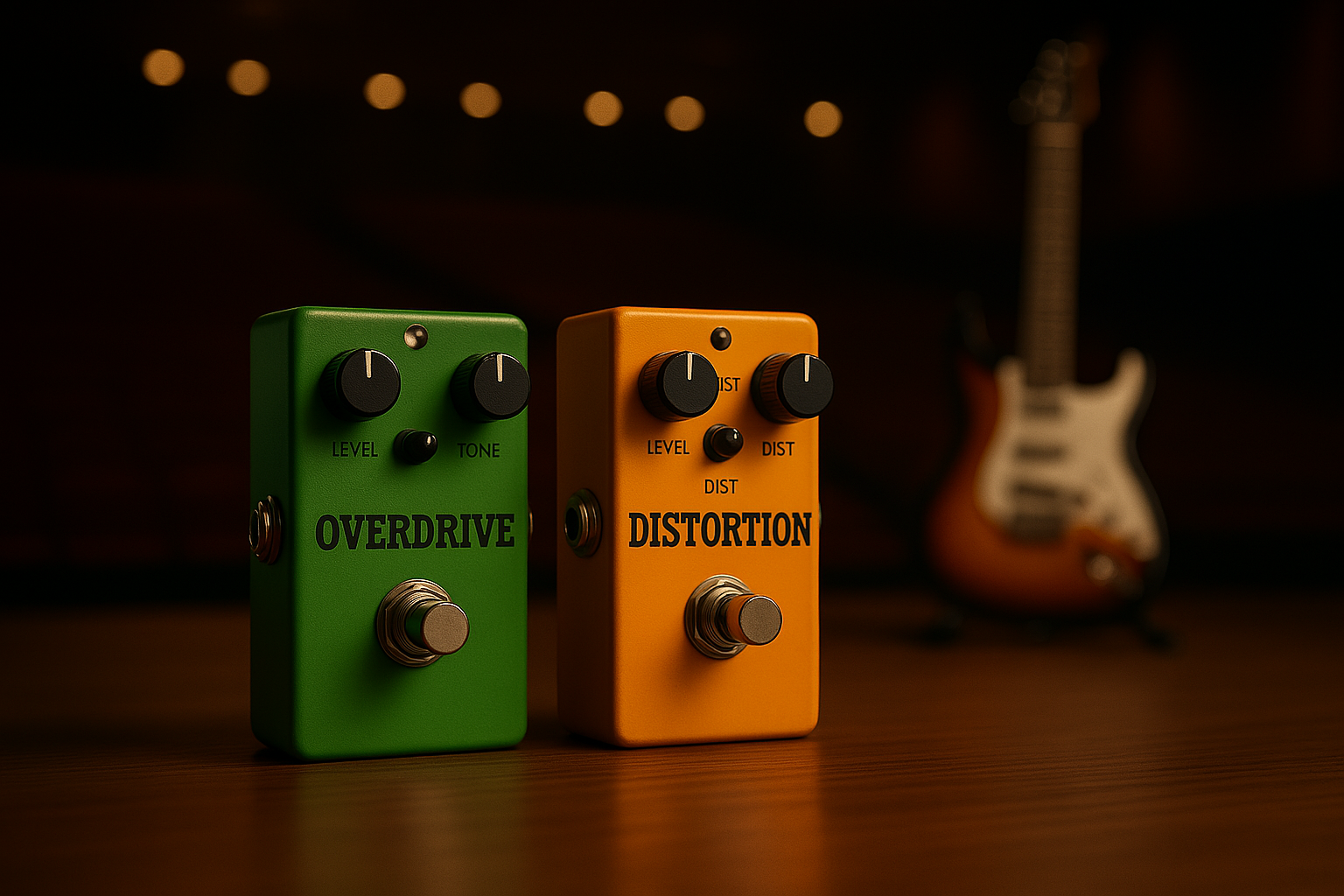🎹 Compact MIDI Keyboards: The Smart Investment for Musicians and Producers in 2025
Category: Buying Guides | Music Production | Studio Equipment
In a music scene where home production and mobility are the norm and the cost of new equipment keeps climbing, the compact used or refurbished MIDI keyboard has become the most strategic central piece for any musician, beginner producer, or student in 2025. It is not just an affordable alternative; it is an intelligent entry point into the digital production ecosystem—without compromising quality or precision.
Unlike traditional keyboards that generate sound on their own, a MIDI keyboard is a smart controller. Its role is to act as a sophisticated bridge between human expression and music software. It connects via USB to your computer, tablet, or smartphone and translates every keystroke, dial turn, or slide into MIDI data understood by your virtual instruments (VSTs), effects, and digital audio workstations (DAWs). The best part? Its Plug & Play simplicity, powered via USB, eliminates the need for power adapters or voltage concerns, making it universally compatible in any portable or home studio.
Dissecting the MIDI Keyboard: Key Components and Technical Learning
Understanding the anatomy of a MIDI keyboard helps you make an informed decision. Beyond the number of keys, these are the technical features you should consider:
1. The Keybed: The Core Touch Experience
- Action Type:
- Synth-Action: Lightweight keys, fast response, ideal for synth solos and drum programming. Common in compact models.
- Semi-Weighted: Adds a bit of resistance, simulating a piano feel without full weight. A great middle ground.
- Hammer-Action: Mimics an acoustic piano’s mechanics with weighted keys. Rare in compact units but the best for expressiveness.
- Velocity Sensitivity: Detects how hard or soft you press a key, translating it into volume or dynamic expression—essential for realism.
- Aftertouch: Found in advanced models. It senses continued pressure after a key is pressed, letting you modulate parameters like vibrato or filter in real time.
2. Additional Controls: Your Mini Mixer
- Knobs and Faders: Used to manipulate software instrument or effect parameters (e.g., filter cutoff, resonance, volume, pan) in real time, easily mappable in any DAW.
- Pads: Velocity- and pressure-sensitive, ideal for finger drumming, launching samples, or live performance clips.
- Transport Buttons: Control your DAW’s basic functions (Play, Stop, Record, etc.), streamlining your workflow.
- Pitch Bend and Modulation Wheels: Add expression to performances by altering pitch or applying modulated effects.
3. Connectivity: The Crucial Link
- USB-MIDI: The standard for modern devices. Most compact keyboards are “Class Compliant,” meaning no driver installation required—just Plug & Play.
- 5-pin MIDI DIN ports: Found in some models, they allow connection to vintage hardware (synths, sound modules).
- Sustain Pedal Input: Important for realistic piano or synth performances.
🔍 Why Choose a Used or Refurbished MIDI Keyboard from Japan in 2025?
Japan’s second-hand market presents distinct advantages for acquiring MIDI keyboards:
- Culture of Meticulous Care: Electronics are often in excellent condition, even when pre-owned, due to cultural norms of careful ownership.
- Lower Intensive Use Rates: Many items come from hobby studios with minimal wear, not heavy-use pro environments.
- Complete and Clean Units: Often include original cables, manuals, and packaging—even from individual sellers.
- Superior Packaging and Shipping Practices: Ensures safe transit and arrival in near-mint condition.
- USB Power = Global Compatibility: No voltage or adapter compatibility concerns. Perfect for international buyers.
🎼 Top Brands to Consider in the Used Market
Akai Professional
- Technical Detail: Known for MPC-style velocity- and pressure-sensitive pads (often with aftertouch) and tight DAW integration. The MPK Mini series is an industry benchmark.
Korg
- Technical Detail: Synth-action keys with excellent tactile feedback and intuitive integration with Korg software and VSTs. Many models made to high Japanese standards.
M-Audio
- Technical Detail: Great value and compatibility with top DAWs via Mackie Control/HUI protocols. Reliable keybeds for everyday use.
Arturia
- Technical Detail: Sleek, durable builds with high-quality included software (e.g., Analog Lab) that pairs perfectly with the hardware.
Donner
- Technical Detail: Budget-friendly but surprisingly high-performing. Keybeds are comfortable, and features cover all the basics for beginners or travel setups.
🎹 Where to Buy Used MIDI Keyboards by Region (Verified Amazon Links – 2025)
Explore Amazon listings by region
As an Amazon Associate, I earn from qualifying purchases. Your support helps keep this site running.
🎯 Conclusion: Your Studio, Your Budget, Your Smart Move
Buying a compact second-hand MIDI keyboard in 2025 is more than just saving money—it’s a smart, strategic investment in your creative workflow. With the right technical knowledge and seller scrutiny, you can access professional-grade tools that empower your music production without derailing your finances. Research well, compare across regions, and get ready to unleash your musical potential.


